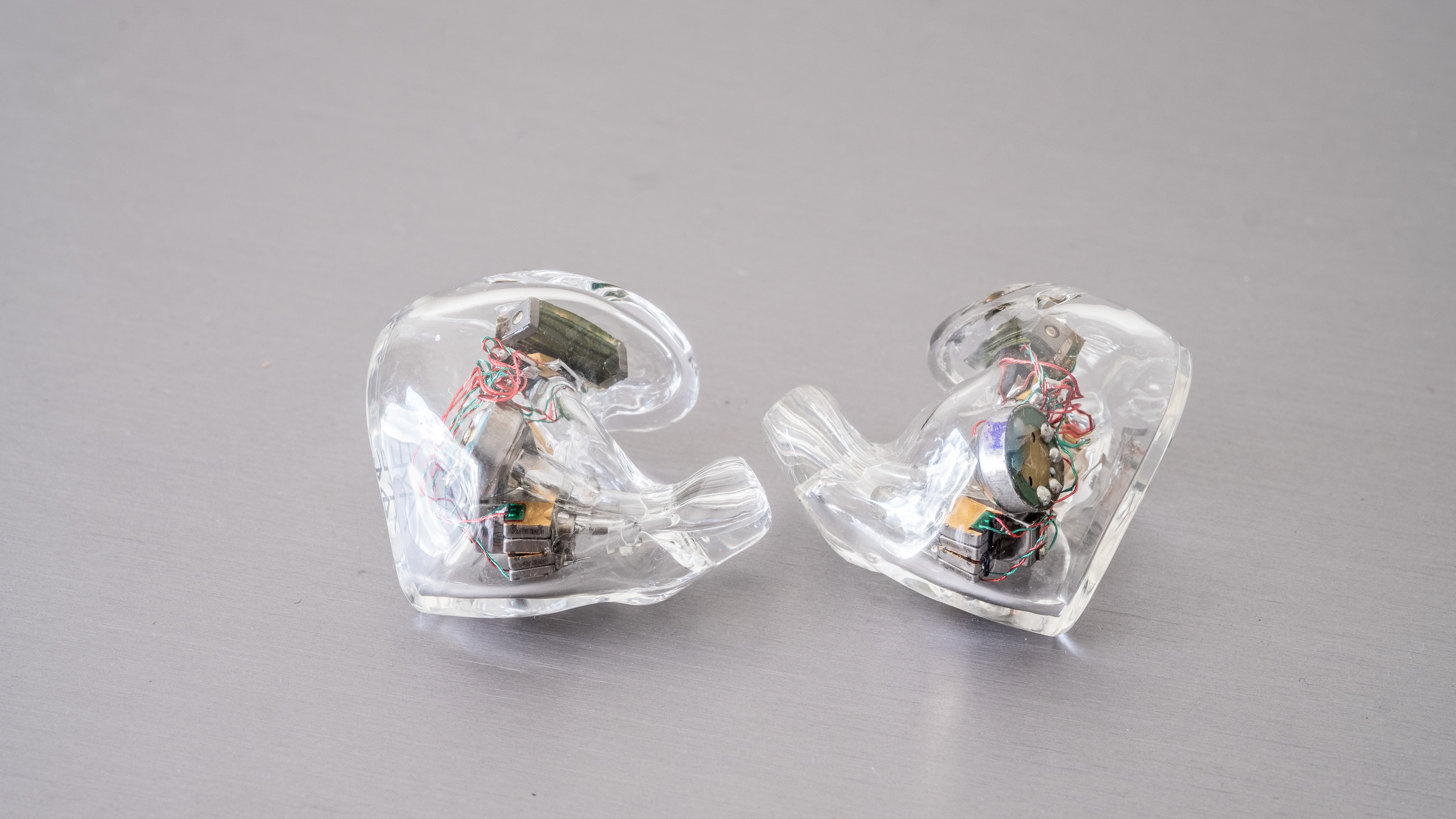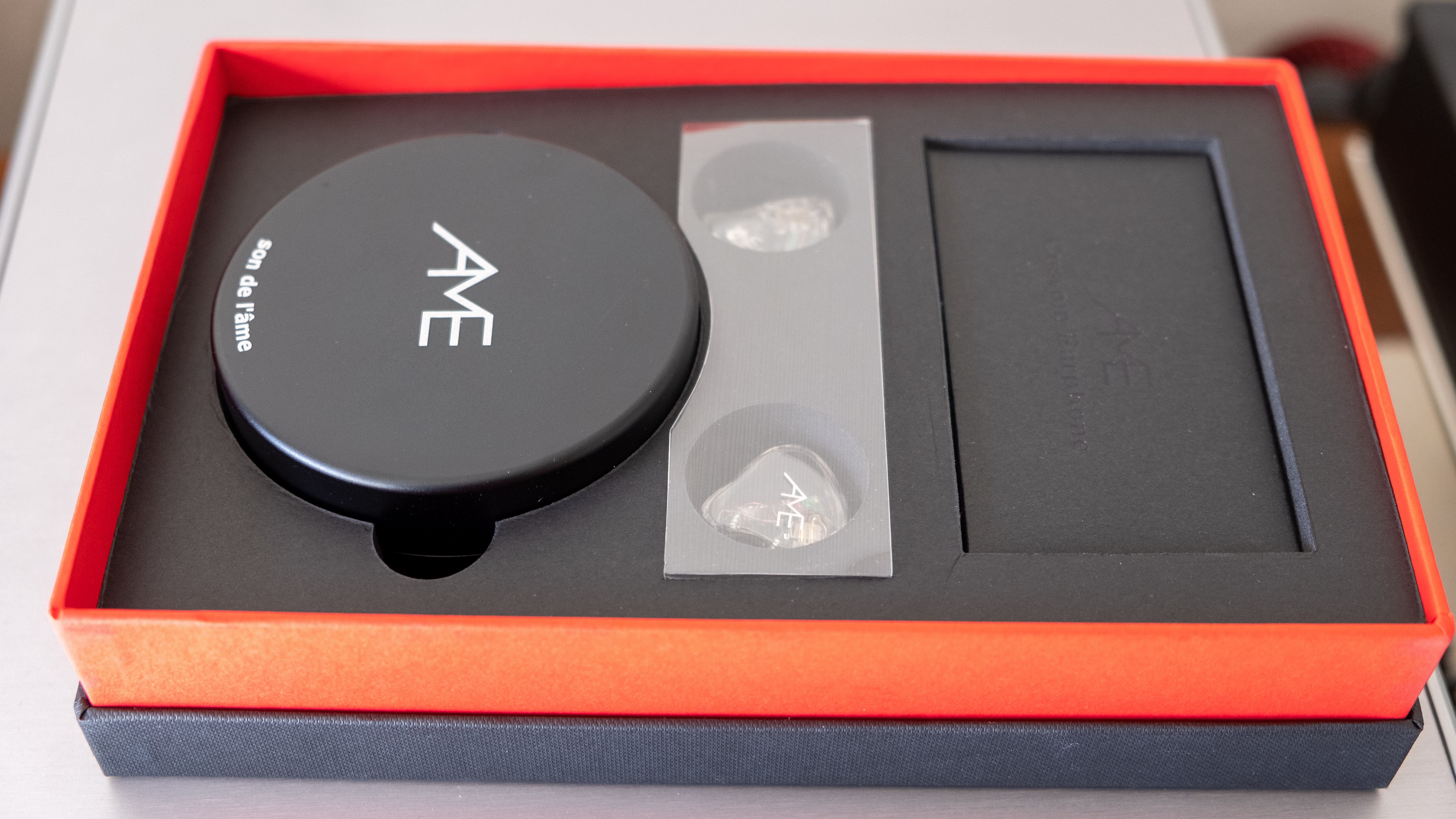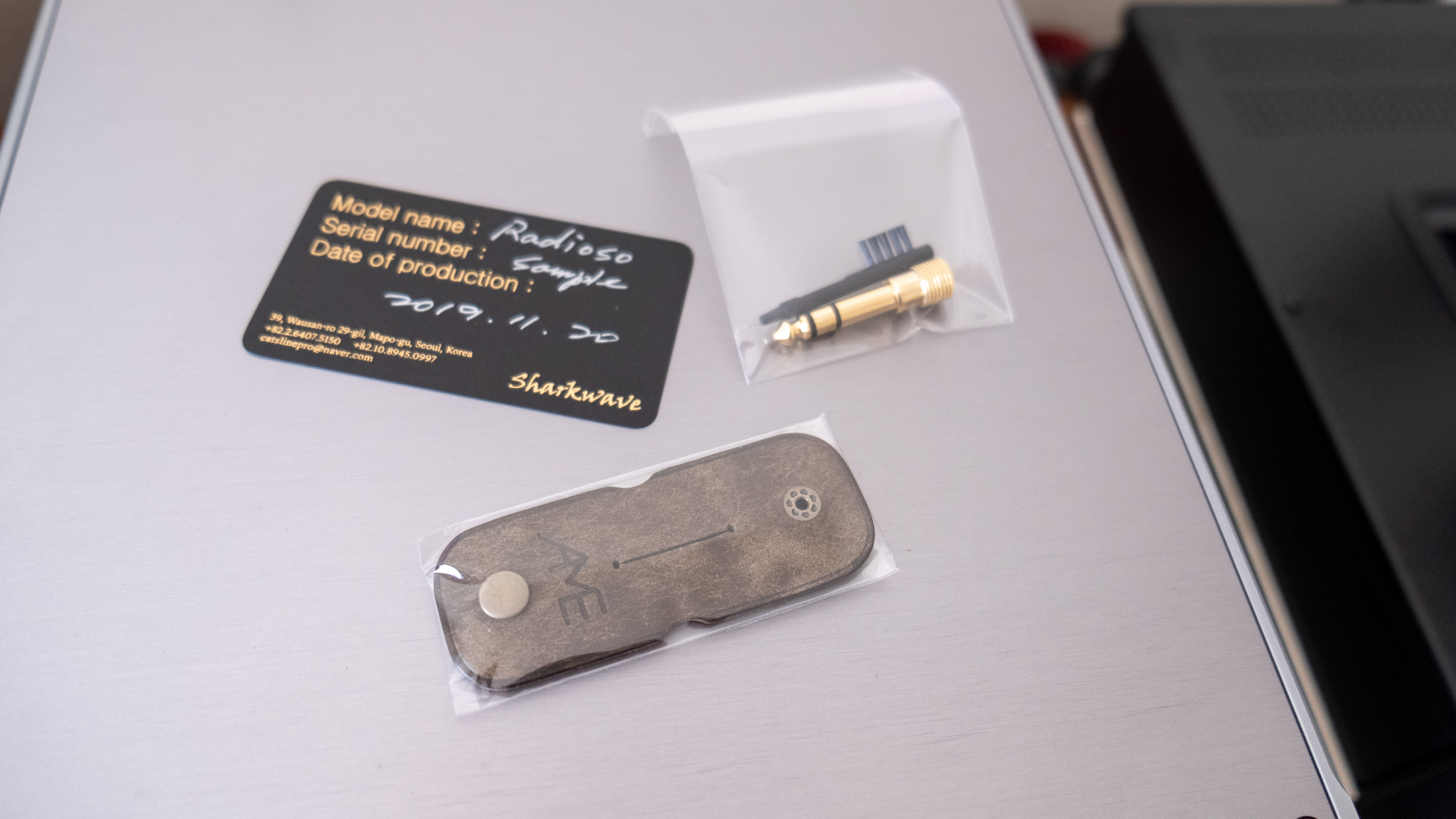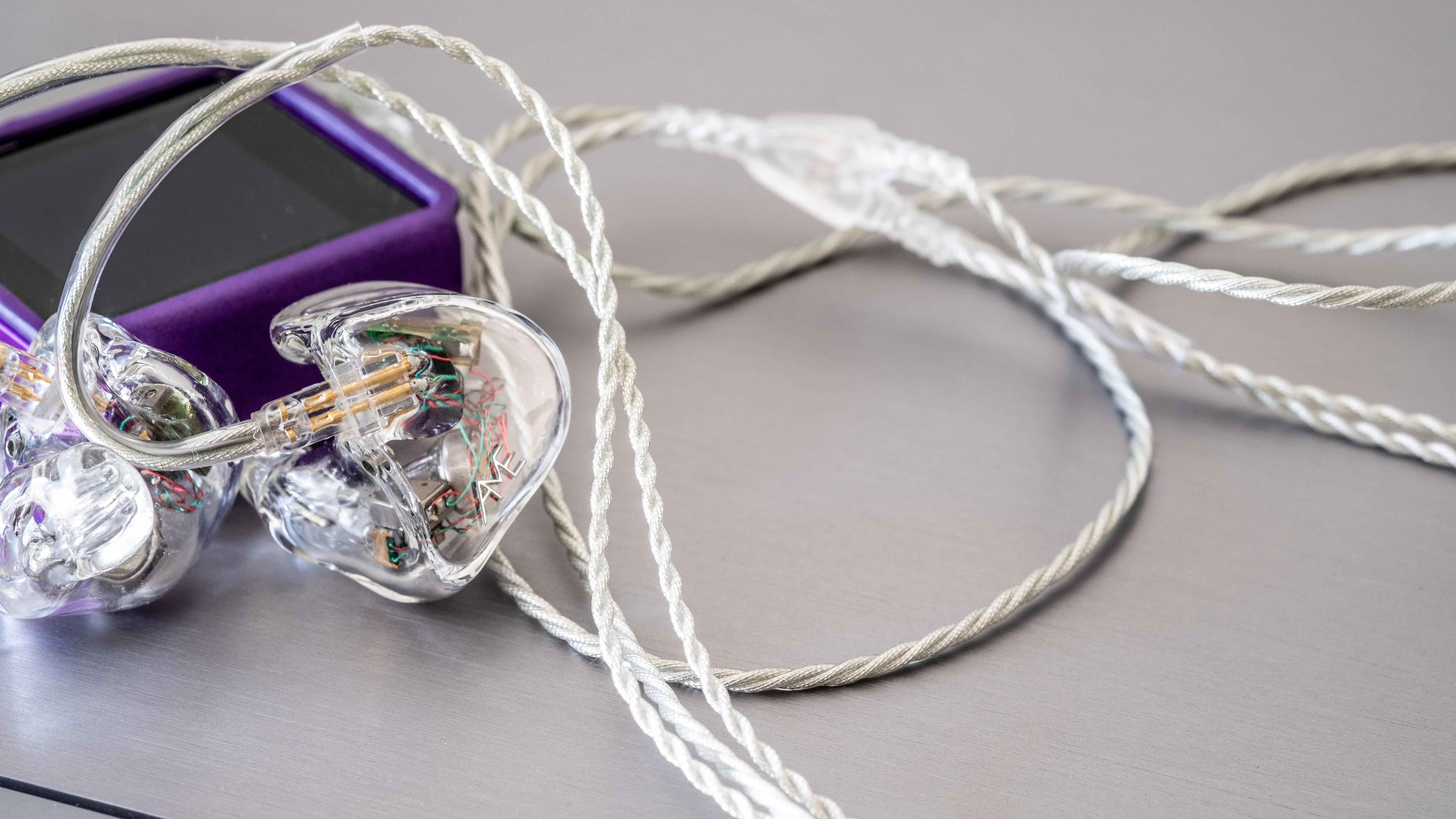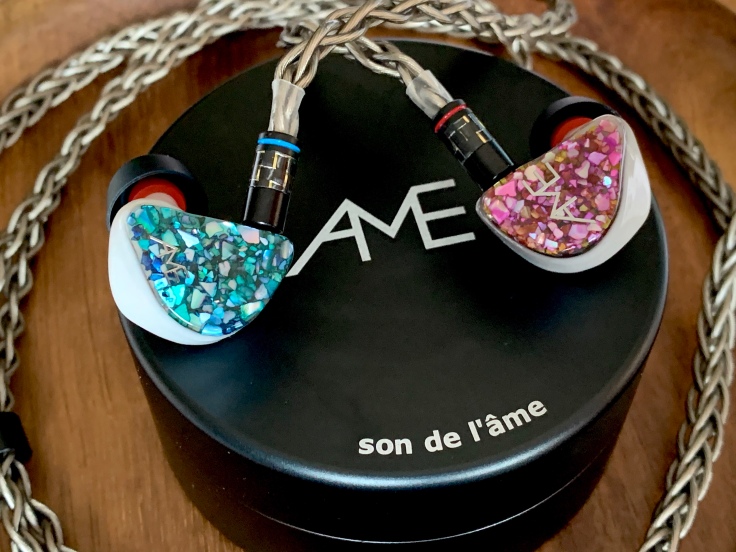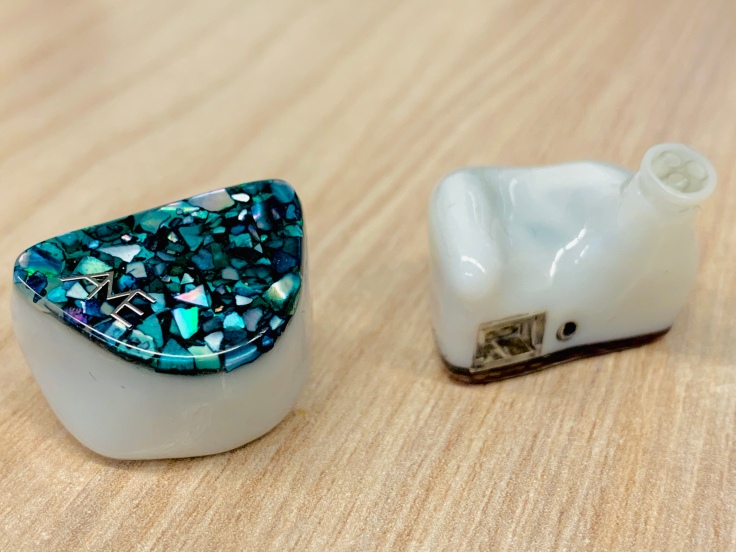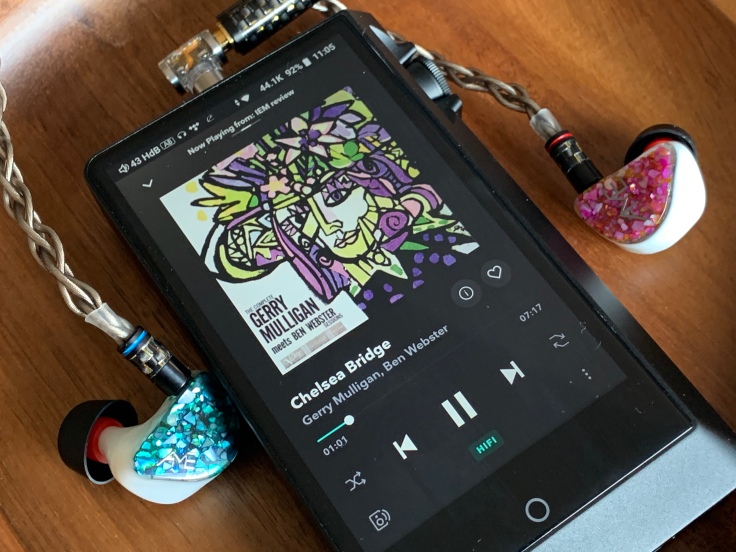
INTRODUCTION
Earlier in the year I had the opportunity to test and review AME's Argent IEM. It was a 6 driver Inner Ear Monitor featuring a combination of 4 BA drivers and 2 Electret (micro electrostatic) drivers. I loved the Argent, and if anything my only critique would have been that the bass was just a little “polite”. So Earl Chon of AME Custom Earphones in Korea contacted me again – this time about testing their 6 driver DD/BA/ET combo Radioso. Again (naturally) I jumped at the chance. How would the Radioso stack up, and could it match (or exceed) the Argent?
ABOUT AME CUSTOM EARPHONES
AME is located in Seoul South Korea, and was originally started to give support to musicians for customer earphone builds. Their popularity grew, leading to the current two releases (Argent and Radioso), and looking to expand to a wider audience.
Here is a quote from their website, which really does give an insight into what drives the company:
“For everyone who loves musicians and music, I am introducing an indigenous custom earphone brand”
Well we definitely love music and musicians. AME Custom’s website and Facebook page are each linked here (website) and here (Facebook).
DISCLAIMER
The AME Radioso that I’m reviewing today was provided to me as a review loaner. It will need to be returned. The retail price at time of review is ~ USD 1450.
PREAMBLE
If you haven't read any of my reviews, I suggest starting here, as it will give you an insight into my known preferences and bias (https://www.headphone-earphone.reviews/2018/02/07/about-brooko/)
For the purposes of this review - I used the AME Radioso straight from the headphone-out socket of many of my portables, but predominantly the X5iii, M9, M11, and R2R2000. I have also experimented with a variety of amplifiers including the FiiO Q1ii, E17K, Q5, and xDuoo XP-2. IMO they do not benefit greatly from additional amplification, although they are slightly more difficult to drive than the Argent (less sensitive, and slightly higher impedance). In the time I have spent with the Radioso, I have noticed no change to the overall sonic presentation (break-in).
This is a purely subjective review - my gear, my ears, and my experience. Please take it all with a grain of salt - especially if it does not match your own experience.
THE PACKAGE
The AME Radioso arrived as a demo version – simply the IEMs, and a custom cable (I'll explain why later in the build section). As I didn't get the full package, I have copied both the contents and photos from my Argent review – as the packaging is essentially the same.
The Radioso consists of a 138 x 217 x 500 box and lid. Inside will be the Radioso IEMs nestled in a foam insert, an aluminium alloy carry case and a box containing the tips and other accessories.

| 
| 
|
- 1 pair AME Radioso Trybrid IEMs
- 1 x 2 pin stereo cable
- 1 x aluminium alloy 2 piece case (80mm diameter x 35mm height)
- 3 pairs of Spinfit silicone ear tips (1 x L/M/S)
- 3 pair of Comply foam tips T400 (M)
- 1 3.5mm to 6.3 mm adaptor
- A cleaning brush
- A leather cable tidy
- A card with serial number etc.
THE TECHNICAL SPECIFICATIONS

MEASUREMENTS
The graphs I use are generated using the Vibro Veritas coupler and ARTA software. Ken Ball (ALO/Campfire) graciously provided me with measurement data which I have used to recalibrate my Veritas so that it mimics an IEC 711 measurement standard (Ken uses two separate BK ear simulators, we measured the same set of IEMs, and I built my calibration curve from shared data). I do not claim that this data is 100% accurate, but it is very consistent, and is as close as I can get to the IEC 711 standard on my budget.
I do not claim that the measurements are in any way more accurate than anyone else's, but they have been proven to be consistent and I think they should be enough to give a reasonable idea of response - especially if you've followed any of my other reviews. When measuring I usually always use crystal foam tips (medium bore opening) - and the reason I use them is for very consistent seal and placement depth in the coupler. I use the same amp (E11K) for all my measurements - and output is under 1 ohm. Measurements above 9-10kHz are generally problematic with any hobbyist set-up, and should be disregarded, but generally my measurements from 20Hz to 9-10kHz have proven to be relatively close to many of the measurements of the manufacturers who support me.

The graphs are provided merely as a point of discussion, and later in the review I've included comparisons to other IEMs for similar reference. Channel matching is good over the entire frequency range, but not as tightly aligned as with the Argent. I noticed no miss-match when music was being played.
BUILD
External
The AME Radioso has the type of shape you normally associate with higher end customs, and is a peanut/jelly-bean shape design. It is designed to ergonomically fit snugly inside your outer ear cavity, securely held inside the Concha with the skinny end inside your Inter-tragical notch. Just like true customs, it has a small rise of resin at the rear of the IEM shell to comfortably accommodate placement over the Crux helix and sit intact on the Cymba.

| 
|
The outer shell material is a highly transparent resin, and the clarity of the resin is amazing – amongst the best I have seen. It is literally like looking into a window (to view the IEM inner components) The outer face is a face-plate, and this pair is decorated with a sparkly steam-punk design.
The internal face is very smooth. It has a port for venting the dynamic driver next to the cable out on top of the Radioso shell. The housing has an and end to end length of 23mm, height of 16mm and depth of 14mm (excluding the nozzle). The nozzle is angled nicely forward and up, and is 7mm in length. The nozzle diameter is 6mm, has a generous lip, and has 3 separate sound channels in the tube.

| 
|
Normally the Radioso comes with a standard 2 pin cable and socket connection. This is from my Argent review:
At the top rear of the Argent shell is an almost flush fitting standard 2 pin socket (protrudes by about 0.5mm). The 2 pin plugs are colour coded (blue or red) for right and left. The socket is very firm with the supplied cable and feels very sturdy. The Argent comes with a single ended cable. AME have used a high purity (6N OCC) silver plated copper wire encased in a very flexible transparent TPU sheath. From the 2 pin connectors to the Y-split is a single twisted pair on each side, and then from y-split to jack appears to be a twisted triple. The Argent cable has flexible form-able ear-loops. I find these loops really comfortable and work well. Both the Y-split and Jack are metal, and there is a cinch above the Y-split which works well for snugging the cable tight. The cable has extremely low micro-phonics – essentially non-existent when using the cinch.
This is what you'll normally get with the Radioso.

| 
|
Internal
Internally the AME Radioso uses a “trybrid” 6 driver system which is quite different from the Argent. There is a single dynamic driver for the sub and mid-bass, a single BA driver for the mid-range, and quad Electrostatic drivers for the high and super high frequencies. This is managed by a three way cross over network. This is the second time I’ve heard an electrostatic tweeter in an IEM (the first being the Argent), and I continue to be impressed with these drivers. Effortless detail and extension without any signs of abrasiveness or grain.
FIT / COMFORT / ISOLATION
Internal and external isolation is good, but not quite as isolating as the Argent. This will be the effect of the dynamic driver port. With music playing though, you don't really notice any background noise. It does ultimately depend on tip choice and seal. I would rate passive isolation as average and it would be usable on public transport. Although it does not completely block out aircraft drone, by the time you add music, you shouldn't hear much in the way of cabin sounds. Unfortunately with Covid restrictions, I won't be flying for a while, so difficult to test.

| 
|
Fit and comfort thoughts are very subjective, and will vary from person to person. My experience has been positive. The AME Radioso has been designed for an ergonomic fit (much like a custom monitor). For me they are a perfect, sit relatively flush with my outer ear, and basically disappear within a few seconds of wearing (I could forget they are in). I have slept with them intact, and woken hours later with them still there and no discomfort. The AME Radioso is designed to only be used cable over ear. It should be noted that the shells are slightly larger than the Argent, and some with smaller ears may consider them to be slightly on the larger side of what is comfortable.
The Radioso has a good lip on the nozzle. I've tried my usual Spiral Dots, Spin-fits, Ostry tuning tips and Sony Isolation tips – all fit easily and are secure. They are a relatively shallow fitting IEM, but the nozzles are long enough for most tips to seal effectively. Saying that, foam still gives me the best combination of seal and comfort, and my preference is for either Comply or stretched Shure tips.
SOUND QUALITY
Most of the testing at this point was done with the FiiO M11, no EQ, and Shure foam tips. I used the M11 simply because paired they gave me a very transparent window to the music with low impedance, and more than enough power.
For the record – on most tracks, the volume level on the M11 was around 65/120 on low gain (depending on the track) which was giving me an average SPL around 65-75 dB. Tracks used were across a variety of genres – and can be viewed in this list https://www.head-fi.org/f/articles/brookos-test-tracks.17556/
While testing I constantly switched with my reference pair (Alclair Curve + E17K with +4 bass) to give me a good reference base-line. The additional bass is to bring the Curve sub-bass closer to reference.
Relativities
- Sub-bass – In perfect balance with the other frequencies. Perhaps slightly elevated but sounds nicely balanced to me. Extension is good with slight roll-off in the lowest registers but still able to convey sub-bass rumble (Lorde's “Royals). There is no noticeable bleed into other frequencies. The bass has very good texture and sufficient impact to be enjoyable.
- Mid-bass – slightly elevated compared to sub-bass and lower mids with decent impact. The bass timbre and definition is clean, and not as dry or quick as the mid-bass on the Argent. The bass quality and quantity is very consistent from track to track and for those looking for a balanced signature throughout the signature, the Radioso delivers well, whilst at the time adding that little extra impact to EDM.
- Lower mid-range – recessed compared to bass and upper mid-range, and the U shaped overall signature is a little more apparent – especially with male vocals. Both male and female vocal fundamentals are still pretty good though, although male vocals can come across ever so slightly on the leaner side (depending on the artist). I'm still really enjoying the likes of Pearl Jam and Seether (perhaps more because of the mid-bass transition to lower-mids). The slight recession also adds to a sense of overall space and separation.
- Upper mid-range – There is a slow and shallow rise from the lower mid-range to an extended shelf at 2-6 kHz, which is then maintained and extended through to the lower treble. The transition from lower to upper-mids is cohesive, and there is enough presence to provide both detail and presence. There is euphony with female vocals.
- Lower treble has extremely good extension. It is also quite linear with a small peak at 7 kHz, and a stronger peak at 9-10 kHz (similar to the Argent). This does provide a lot of air, but no resulting brittleness or sharpness. And this (like the Argent's signature) is the what separates the Radioso from anything else I’ve heard. The extension and range of the treble brings detail and clarity – yet without the harshness or brittleness a BA would deliver with the same peaks.
- Upper treble extends quite well with some decent “air”, but is difficult to capture properly on my measurement rig, and with my “aged” hearing I no longer notice much over 12 kHz anyway.
- Overall this is a very well balanced monitor with a “U” shape which has more to do with the slight recession in mid-range (intended) than any obvious emphasis at either end of the spectrum.
Clarity overall is (in a single word) “crystalline”, but without any harshness. Its especially noticeable with jazz, or any rock with a lot of cymbals. It reminds me of my HD800S in that every brush of the cymbals is audible, but with shimmering decay rather than being jagged or brash. I use Nils Lofgren's guitar from his live album to track finger movements on the fret board and interaction with the crowd, and it is a pure delight. Detail and tonality hand in hand. I really like this combo of DD with ET drivers.
Sound-stage, Imaging
Directional queues are very clean and concise. Presentation of stage is outside the periphery of my head space with binaural tracks, so relatively expansive for an IEM, and possibly slightly more so than with the Argent. I continue to use Amber Rubarth’s “Tundra” (binaural album), and its really a great track for both stage and imaging as I also have a video for the recording. One of the other tracks I use (again I have the video as well as high-re recording) is Netrebko and Garanca's live recording of Lakme's Flower Duet. It has a wonderful transition of position from front to rear of stage, and its easy to track with the Radioso (and very realistic). The applause section is also a good test for width and depth (the sound of the audience flowing around me). Width of stage might be slightly wider than overall depth, but there's not a lot in it, and the realism is definitely there.
“Let it Rain” (Amanda Marshall) gives its usual nice three dimensional feel (the way the track is miked) with good guitar and vocal presence. There is sibilance with Amanda's vocals – and it should be easily noticeable because its in the recording. But the nice thing about the Radioso is that while the sibilance is there – its not over-emphasised or further enhanced. And if anything its slightly better than it was on the Argent. Nice.
Strengths
- Texture and impact of both sub and mid-bass.
- Reasonably expansive sense of stage
- Good for both female and male vocals.
- Euphonic upper mid-range
- Extremely detailed and clear treble with no brittleness
- For my tastes, I struggling to notice any deficiency. Perhaps a slight roll off in sub-bass, but nothing which leaves me underwhelmed.
AMPLIFICATION REQUIREMENTS
The Radioso doesn’t really need extra amplification for overall volume (as long as you have a decent source). Because its impedance is a relatively low 19 ohms, a source with an output impedance of around 0-2 ohms (to meet damping requirements) should make the best match.
With the M11 around 65/120 low gain volume covers my normal 65-75 dB listening level. With the X5iii this is similar (60-65/120) and the M9 rounds out the FiiOs also with 60-65/120. So the Radioso is slightly more difficult to drive than the Argent, but even the diminutive M6 can manage it and have no issues with overall sound quality.

| 
|
Next up was amplification, which meant testing with the Q1ii, E17K, Q5, and XP-2. In each case while I sometimes noted a slightly different tonality, there were no stand-out differences in dynamics on any of the additionally amped sources (none I'd be likely to tell in a volume matched blind test anyway). The XP-2 (via Bluetooth) added some extra warmth which wasn't really needed.
RESPONSE TO EQ?
Personally I find the Radioso pretty much spot on with regard to signature balance, and even more so than the Argent. So what about tweaking the sub-bass (experimental more than desired). I did this with Neutron's parametric EQ on the M11 and whilst I could easily increase the raw thump of the Radioso it didn't really add to my experience sonically. It responded well though – so I guess the option is there if you wanted a little more.
COMPARISON WITH OTHER IEMS
These comparisons were all done with the M11, (no EQ) – and volume matched using a calibrated SPL meter and fixed 1kHz test tone first. For this series of tests I’ve tried to look at both value (comparison to higher value IEMs) and quality. Unfortunately I don’t have a lot in this price bracket – but comparisons to AME's Argent, HiFiMan's RE2000, 64 Ears U10, LZ Big Dipper, Fidue's A91 Sirius and Dunu DK-4001 should be both relevant. For comparison with a bang for buck IEM, I’ve used FiiO’s new FH7.
This is pretty subjective, but the graphs do show relativity against the other IEMs for reference.
AME Radioso ($1450) vs AME Argent ($1450)

| 
|
Both are in very similar shaped resin shells with a completely ergonomic design. The Argent is slightly smaller than the Radioso, so if you have smaller outer ears, you may find the Argent is a little more comfortable. I have large ears, and the fit is great on both. On build quality – you're getting same attention to detail, and same durable materials. The Argent isolates slightly better (if that's important to you). All in all though – this is a tie. Same design, just different internal components / driver configuration.
Sound & Value
Both have some similarity in their signatures, with both being a little U shaped (the Radioso is more pronounced). Where they differ is in the bass and upper mid-range. The Radioso has more pronounced bass with more natural texture (typical of a DD) whilst the Argent has more speed and is lighter in impact. Both have great clarity in the upper mid-range and lower treble, but the Radioso's upper end is more balanced/polite than pronounced/presented. I like both of these (a lot), but I do find the Radioso is slightly warmer and a more all round listening experience.
AME Radioso ($1450) vs HifiMan RE2000 Gold ($1500)

| 
|
The RE2000 is a single DD vs the AME Radioso 6 driver trybrid. Both have an ergonomic shape, but the RE2000 has some hard edges, and I’ve always had comfort issues with it. Both are made of durable materials and have well made replaceable cables – with the stock Radioso cable being more pliable and less prone to tangling (the custom copper one included with this demo is also far nicer). In this comparison, Radioso takes the points for cable, comfort, and ergonomics.
Sound & Value
There is a lot of similarity in these signatures, with both being a little U/V shaped (the RE2000 is more V with more upper mid/lower treble energy). Radioso has more sub-bass extension which is a bit more pronounced and noticeable especially when taking the RE2000's more pronounced upper end into account. They both have pretty good overall balance, but could be called a little on the coloured side *the Radioso a little more balanced overall). For me in overall value, the Radioso simply delivers a better overall sonic signature and much better comfort.
AME Radioso ($1450) vs 64 Audio U10 ($1300)

| 
|
The U10 is a 10 BA driver (per side) vs the Radioso’s 6 driver trybrid. Both IEMs have ergonomic shells and are very comfortable for long term listening. Both also have replaceable 2 pin cables (Radioso's normal stock cable is better quality). The body on the Radioso feels better built, and does fit me better (better ergonomics). The U10 has the M20 Apex module which can be swapped out for an Adel module to effectively change the sound. Overall the Radioso wins on comfort, ergonomics and overall build quality.
Sound & Value
These are quite different sounding IEMs despite their similar looking graphs. For starters the Radioso requires quite a bit more power (that sensitivity really is a factor here). Both show really good overall balance, and both have good bottom end warmth. The Radioso has more impact and thump, and also a little more upper end clarity and vitality. The U10 is less coloured, but also a little flat comparatively. Both are exceptional IEMs, but I find myself “pulled into the music” more with the Radioso. It is simply more engaging, and the effortless presentation of the lower and upper treble is brilliant. As much as I love the U10, the Radioso is in a higher league IMHO.
AME Radioso ($1450) vs Dunu DK-4001 ($900)

| 
|
The DK-4001 is a 5 driver traditional hybrid vs the 6 driver DD/BA/Electrostatic Trybrid Argent. Both are extremely well made with ergonomic shells and replaceable cables. The DK4001 is a multi-jack modular cable which is extremely well designed, but I still prefer the overall ergonomics of the Radioso stock cable. The custom cable with the Radioso is similar quality, but the DK-4001 cable would win with it's modularity. The Radioso, despite being larger, is still a little more comfortable due to its better ergonomics.
Sound & Value
This is a really interesting match up because they both have very similar mid-range and upper treble characteristics. In fact if I EQ the bass lower on the Radioso, I can get closer to the overall DK-4001 signature. Both IEM's have great balance, but where the DK-4001 is quite linear in lower mid-range, mid-bass and sub-bass, the Radioso has a more traditional mid-bass hump. Because of this the Radioso appears the warmer of the two. The second major difference is the DK-4001's lower treble vs the Radioso. Radioso simply has more extension and less overall grain (and both have great overall resolution). Of course DK-4001 is considerably cheaper and delivers a very good overall package. But for total performance including the slightly better fit, I still consider the Radioso worth the premium.
AME Radioso ($1450) vs FiiO FH7 ($450)

| 
|
This pits another 5 driver DD/BA Hybrid vs the 6 driver Trybrid Radioso. Both IEMs have very ergonomic shells and are comfortable for long term listening. Both also have replaceable cables. Comfort and build quality here is shared, although I still find my personal fit is better with the Radioso (but it should be considering the price difference!).
Sound & Value
Why am I comparing these two IEMs – simply because the FH7 is one of the best in its price range and it seemed like a good chance to compare two very different price ranges. Both have a similar upper mid-range tonality, with the FH7 being a little more forward in presentation (the Radioso sounds a little distant in close comparison, but I prefer the sense of width and space). The Radioso has more low end warmth and impact, and while both have a sense of euphony, the Radioso sounds end to end more lively, yet still more balanced (you wouldn't think so from the graphs). Again the Radioso's bottom end and top end are the big differences providing both more presence and resolution. Is there a thousand dollar difference in performance between these IEMs? Definitely not IMO which shows just how good the FH7 are. But if your budget can get there, I would rather have the Radioso and an adequate DAP vs the FH7 and a TOTL DAP.
AME Radioso ($1450) vs Fidue A91 Sirius ($900)

| 
|
The Sirius is another 5 driver DD/BA hybrid vs the 6 driver Radioso Trybrid. Both IEMs have ergonomic shells and are made from quality materials. The Sirius does have some sharpish edges and for those with large ears, this can cause issues (they are painful for me to wear sometimes). The Sirius has a really nice replaceable modular cable. Build and cable quality are similar, but ergonomics and overall comfort are better on the Radioso.
Sound & Value
First up – ignore the graphs. They're measured with the internal DD relief port open (it sits on the internal face of the earphone). If I measure it fully closed/blocked the bass jumps. The reality (for me) is when worn, the bass is similar to a normal DD mid-bass hump, although in my case, less impact than the likes of the Radioso. The Sirius also has a very forward and very pronounced upper mid-range which provides a great sense of euphony, but which is also very coloured. The Radioso provides more bass impact, better mid-range balance and more treble clarity (without being etched). In this case, as nice as the Sirius sounds, it simply can't keep up with the Radioso which is on another level.
AME Radioso ($1450) vs LZ Dipper 3 switches ($860)

| 
|
Its funny because the first time I saw Radioso's signature graphed, I immediately thought of the 7 BA Dipper. Both are in very similar shaped resin shells with a completely ergonomic design. The Dipper might be marginally smaller than the Radioso but its essentially a tie. Both have good cables, great comfort and nice overall design. The Dipper allows you to manipulate Bass, mid-range and treble (although the mid-range choice is not fantastic).
Sound & Value
Both have similarity in their signatures, with both being a U shaped (the Dipper is more pronounced). Dippers BA based bass has a little less impact but more speed. Both have a coloured mid-range and reasonable treble clarity. The Dippers weakness is that the mid-range is a little too sucked out, but I still really enjoy them. The difference is the bass warmth and impact of the Radioso which adds to the lower mid-range, where the Dipper is lacking. The Dipper provides upper resolution via lower bass impact and similar amplitude of treble. The Radioso provides it simply by the technology in the ET tweeters. Overall, I prefer the Radioso – it simply sounds better. But it should be noted here that simply Eqing out the mid-range dip a little in the Dipper produces surprisingly good results.
VALUE
The Radioso is not a cheap IEM. But if you look at the overall package, and especially the sonic performance of the combination of dynamic, armature and electrostatic drivers, then it becomes a question of where diminishing value sits for you personally. The main question I use to evaluate value is “would I buy them”, and knowing I have to give these back eventually, I would say a definite yes. I originally thought the Argent was getting towards end game for me, and then AME shows up with the Radioso, and I'm considering now how I convince my wife that I need a pair of these. I'll have to sell several of my own audio items. That will hurt – but these really have captured me. What really worries me is that Earl has suggested I review the rest of their range, and they have a 12 driver flagship there which my wife might not understand. If anything, AME has shown me that in their case, the higher value is justified, and I definitely don't consider the Radioso over-valued.
AME CUSTOM AUDIO RADIOSO – SUMMARY
When you get to review an audio item over the $1000 mark, its easy to be wowed by the price tag and expectation bias. The Radioso wasn't an immediate sell for me. I liked it, but didn't “love it”. That came with time, and I've had a few months now to really form an opinion. This is currently my favourite IEM and I'll be devastated to return them.
The Radioso is a 6 driver trybrid – 1 DD, 1 BA and 4 electrostatic tweeters. The tuning is wonderful (if a touch coloured), and what I've really liked is the vividness of the sound, and they way bass and treble combine to give fantastic balance but also a sense of vitality and presence. They are definitely U shaped, but its a really good “U” for my personal tastes.
Add the ergonomics, build quality and comfort, and its a complete package. Once again my sincere thanks to Earl and the team at AME for allowing me to review the Radioso. This company really knows how to tune an IEM!

| 
|







